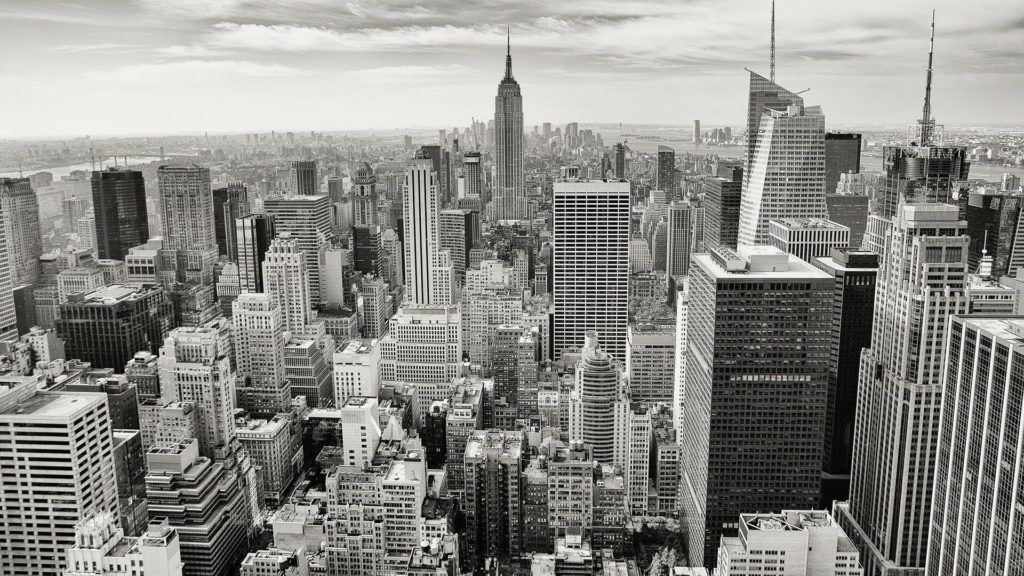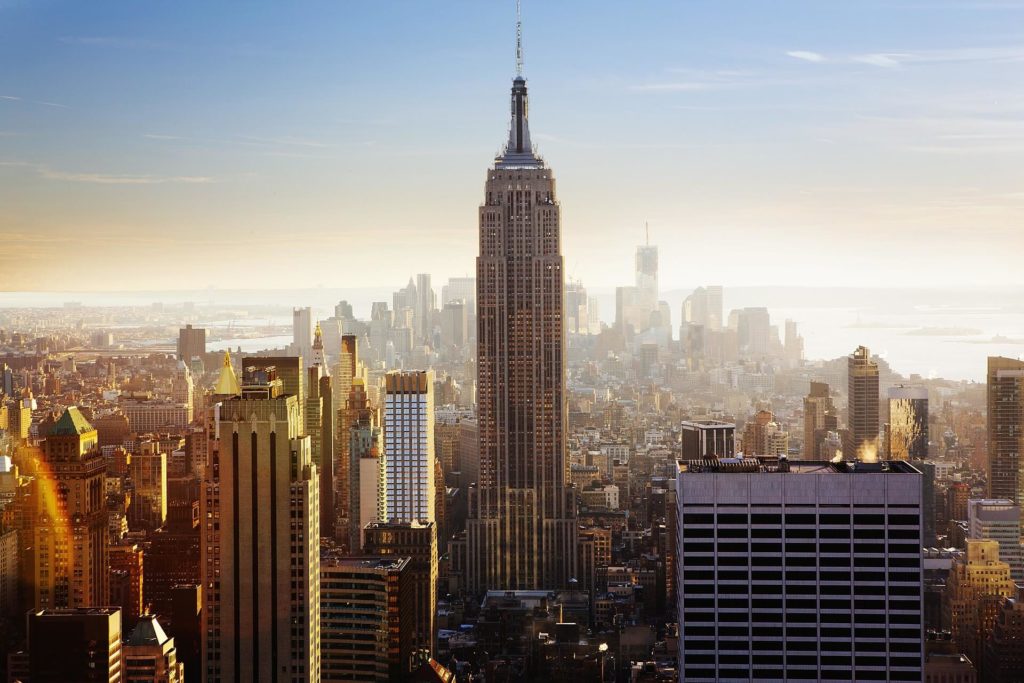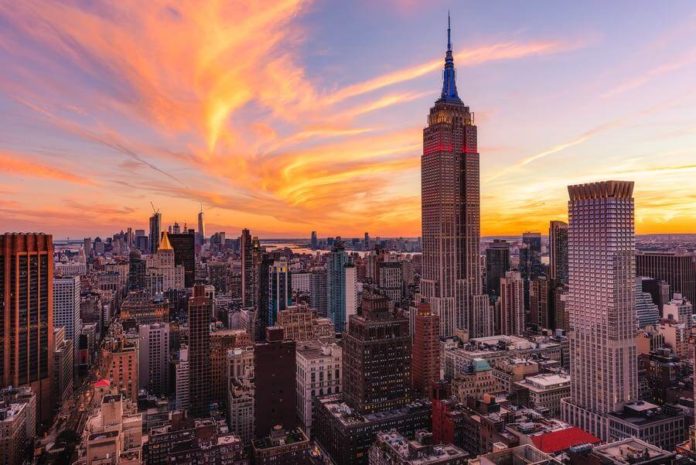The Empire State Building is a 102-story Art Deco skyscraper in Midtown Manhattan, New York City. It was designed by Shreve, Lamb & Harmon and completed in 1931. The building has a roof height of 1,250 feet (380 m) and stands a total of 1,454 feet (443.2 m) tall, including its antenna.
Its name is derived from “Empire State“, the nickname of New York, which is of unknown origin. The Empire State Building stood as the world’s tallest building for nearly 40 years until the completion of the World Trade Center’s North Tower in Lower Manhattan in late-1970.
Here are 5 surprising facts about the Empire State Building:
1.It was constructed during a race to create the world’s tallest building.
In the late-1920s, as New York’s economy boomed like never before, builders were in a mad dash to erect the world’s largest skyscraper. The main competition was between 40 Wall Street’s Bank of Manhattan building and the Chrysler Building, an elaborate Art Deco structure conceived by car mogul Walter Chrysler as a “monument to me.” Both towers tried to best each other by adding more floors to their design, and the race really heated up in August 1929, when General Motors executive John J. Raskob and former New York Governor Al Smith announced plans for the Empire State Building.
Upon learning that the Empire State would be 1,000 feet tall, Chrysler changed his plans a final time and fixed a stainless steel spire to the top of his skyscraper. The addition saw the Chrysler Building soar to a record 1,048 feet, but unfortunately for Chrysler, Raskob and Smith simply went back to the drawing board and returned with an even taller design for the Empire State Building. When completed in 1931, the colossus loomed 1,250 feet over the streets of Midtown Manhattan. It would remain the world’s tallest building for nearly 40 years until the completion of the first World Trade Center tower in 1970.

Source: Pixabay
2.The building was finished in record time.
Despite the colossal size of the project, the design, planning and construction of the Empire State Building took just 20 months from start to finish. After demolishing the Waldorf-Astoria hotel—the plot’s previous occupant—contractors Starrett Brothers and Eken used an assembly line process to erect the new skyscraper in a brisk 410 days. Using as many as 3,400 men each day, they assembled its skeleton at a record pace of four and a half stories per week—so fast that the first 30 stories were completed before certain details of the ground floor were finalized. The Empire State Building was eventually finished ahead of schedule and under budget, but it also came with a human cost: at least five workers were killed during the construction process.
3.Its upper tower was originally designed as a mooring mast for airships.
By far the most unusual aspect of the Empire State Building’s design concerned its 200-foot tower. Convinced that transatlantic airship travel was the wave of the future, the building’s owners originally constructed the mast as a docking port for lighter-than-air dirigibles. The harebrained scheme called for the airships to maneuver alongside the building and tether themselves to a winching apparatus. Passengers would then exit via an open-air gangplank, check in at a customs office and make their way to the streets of Manhattan in a mere seven minutes.
Despite early enthusiasm for the project, the high winds near the building’s rooftop proved all but impossible for pilots to negotiate. The closest thing to a “landing” came in September 1931, when a small dirigible tethered itself to the spire for a few minutes. Two weeks later, a Goodyear blimp dropped a stack of newspapers on the roof a part of a publicity stunt, but the airship plan was abandoned shortly thereafter.

Source: Pixabay
4.B-25 bomber crashed into the Empire State Building in 1945.
On the morning of July 28, 1945, while flying an Army B-25 bomber toward New York’s La Guardia Airport, Army Lt. Col. William F. Smith became disoriented in heavy fog and drifted over Midtown Manhattan. The World War II combat veteran managed to dodge several skyscrapers, but he was unable to avoid plowing into the 78th and 79th floors of the Empire State at 200 miles an hour. The crash triggered a massive explosion and sent debris careering through the building’s interior. Smith and two crewmen were killed, as were 11 people inside the building. A four-alarm fire broke out on several floors—it was then the highest building fire in New York’s history—but firefighters managed to extinguish it in just 40 minutes. Amazingly, the undamaged sections of the building were reopened for business just two days later.
5.A woman survived a 75-story plunge in one of the building’s elevators.
During the 1945 bomber crash, several pieces of the B-25’s engine sliced through the Empire State Building and entered an elevator shaft. The cables for two cars were severed, including one containing a 19-year-old elevator operator named Betty Lou Oliver. The elevator plummeted from the 75th floor and soon crashed into the subbasement, but luckily for Oliver, more than a thousand feet of severed elevator cable had gathered at the bottom of the shaft, cushioning the blow. The fall may have also been slowed by a pocket of compressed air generated by the car’s rapid descent. Despite suffering severe injuries including a broken neck and back, Oliver survived.

















































